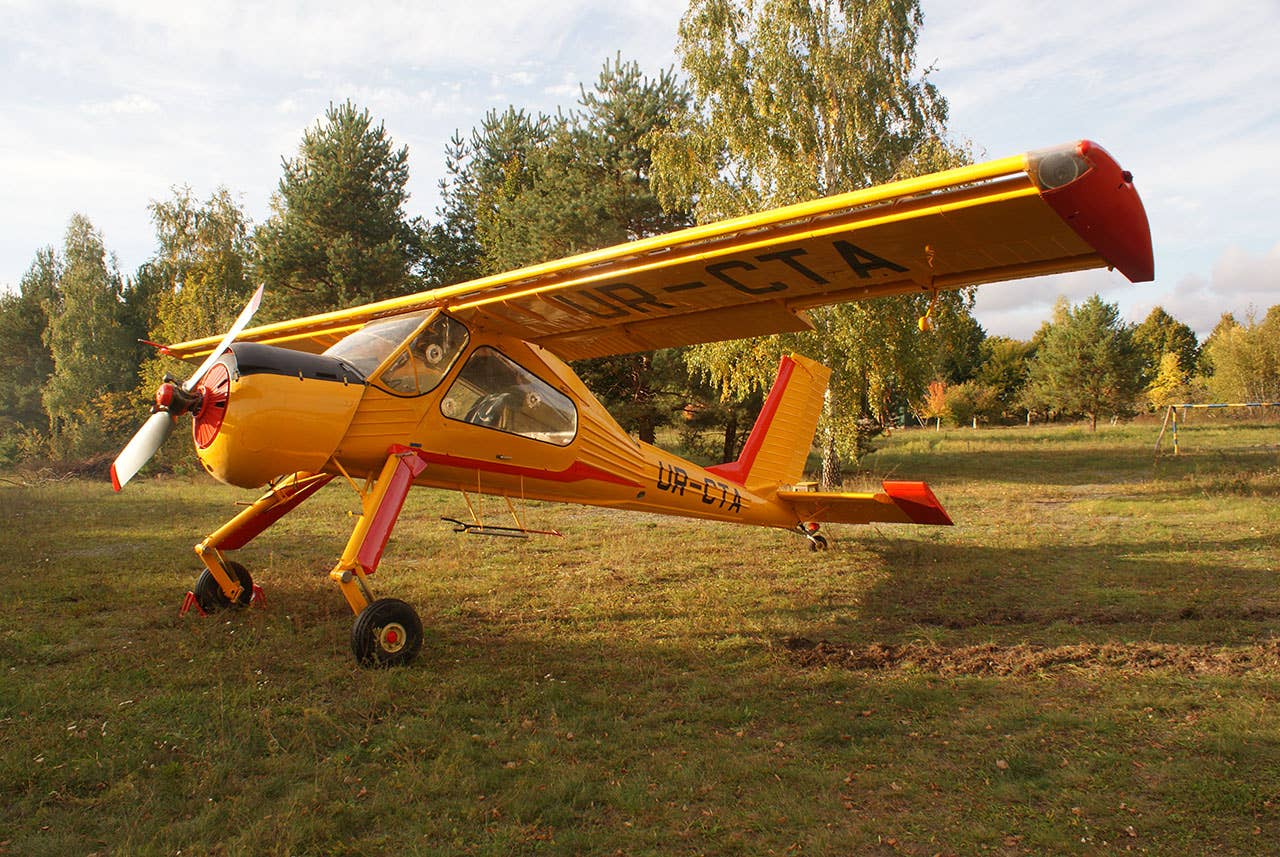Wilga
One of the most dramatically shaped planes in the sky, the PZL-104 Wilga was, like the other planes in this lineup, purpose built. In the case of this Polish utility…

The Wilga is an Eastern European utility plane that many think should have been called the âPraying Mantis.â Photo By Nebesa.Chemer, CC BY-SA 4.0, Via Wikimedia Commons.
One of the most dramatically shaped planes in the sky, the PZL-104 Wilga was, like the other planes in this lineup, purpose built. In the case of this Polish utility plane, which went into service in 1962, the purpose was to be a multi-purpose sport plane, most notably a glider tug---in the former Soviet Bloc country, as elsewhere in Eastern Europe, sailplanes were big; still are. And it was eyed as a good jump plane, though it's unclear how often it was put to that use.
The overall look of the fuselage is compact, but the seating area is quite roomy. The rear fuselage has little side area, so designers gave the Wilga a tall tail. And because many of the runways the Wilga would ply were grass, dirt or gravel, a rugged gear and great ground clearance were also design priorities. Part of the unusual look of the gear is its dramatically forward angle and trailing link gear that reverses that forward line. The wing is fitted with slotted flaps and slats, to make it a true short takeoff and landing performer, with ridiculously short distances needed for landing and takeoff.
Part of the classic look of the Wilga is its round engine, at least in its original configuration. The Soviet-designed Ivchenko AI-14 nine-cylinder radial spinning a two-blade paddle-shaped prop. Later versions sported opposed engines, including versions of the Lycoming IO-540.
It's not known exactly how many Wilgas were produced over the 40-odd-years it was in production, but that number is well north of 1,000. In spite of or perhaps because of its odd looks, the Wilga never caught on in North America, though many have been imported, and a few were sold here by dealers in the '80s and '90s.
Famously, Mike Patey took a Wilga and leaned into the weirdness, modifying it extensively, including by adding a turboprop engine, coming up with a remarkable creation called Draco, which we featured on our cover in March 2019. The plane was heavily damaged in Reno in 2019 in a takeoff accident.

Subscribe to Our Newsletter
Get the latest Plane & Pilot Magazine stories delivered directly to your inbox






